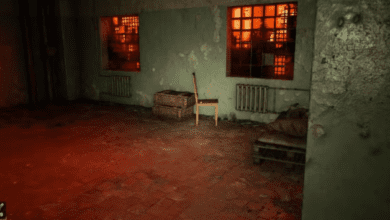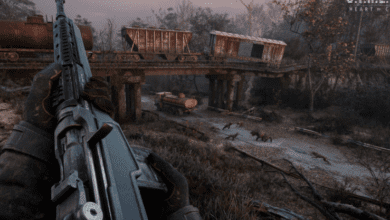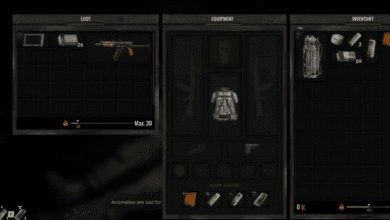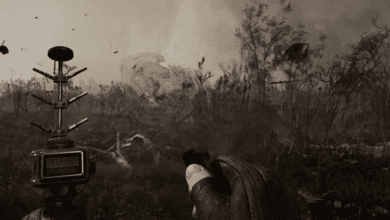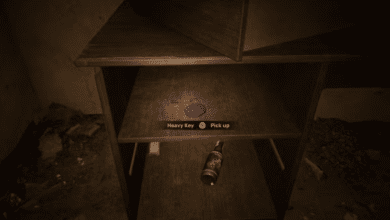Charles Burns Final Cut Review: Exploration of Art, Obsession and Human Connection
When it comes to legendary figures in the world of graphic novels, few names resonate as powerfully as Charles Burns. With a career spanning several decades, his distinct style and narratives have left a lasting mark on readers worldwide. Whether you’re an old-school fan who followed his early work in Raw under the guidance of Art Spiegelman, a collector of OK Soda memorabilia, or someone who just stumbled upon his acclaimed work Black Hole in a bookstore, one thing is clear: Charles Burns is a master storyteller whose creations leave an indelible impression.

Forays Into the Bizarre: Burns’ Signature Style
Anyone familiar with Burns’ previous works will recognize the blend of discomfort and intrigue that permeates his stories. His graphic novels are renowned for pushing the boundaries of the bizarre, while simultaneously grounding readers in a world where characters grapple with deeply personal truths. His latest graphic novel, Final Cut, is no exception to this rule.
Like many of Burns’ previous works, Final Cut pulls readers into a world that’s both surreal and unsettling, yet oddly captivating. But what truly sets Final Cut apart is its accessibility. Unlike some of Burns’ more avant-garde creations, this novel presents a more approachable entry point for new readers, without sacrificing the thematic depth or visual intensity for which Burns is known.
Final Cut: A New Gateway to Burns’ Universe
Final Cut serves as a compilation of Burns’ Dédales series, offering a single-volume collection that dives deep into familiar themes of alienation, obsession, and the boundaries of human connection. Released by Pantheon Books, this new edition reintroduces some of Burns’ favourite motifs, but it does so in a way that feels fresh and reinvigorated. Think of it like hearing an old story from a friend, only this time, it’s tinged with the wisdom and insight that comes with age.

The story revolves around two childhood friends, Brian and Jimmy, who spend their younger years making DIY sci-fi and horror films using Super-8 cameras. Their early film, The Claw, stands as an homage to cult classics like A Nightmare on Elm Street. As they grow older, the duo continues their passion for homemade filmmaking, pairing their own low-budget productions with more polished films in retrospectives. The real narrative, however, starts to unravel as the focus shifts primarily to Brian, whose peculiar outlook on life and filmmaking becomes a lens through which the story is told.
A Grounded Approach to the Surreal: Burns’ Evolution as a Storyteller
Where previous works like Black Hole dealt with grand, existential themes like teenage metamorphosis and societal horror, Final Cut feels more personal and grounded. At its core, it’s a story about connection or more accurately, the lack of it amidst the stark backdrop of the Pacific Northwest. Whereas Black Hole leaned heavily into the body horror genre, Final Cut focuses more on the internal emotional struggles of its characters, particularly young artists attempting to navigate the complexities of life and relationships.
Yet, despite its more grounded nature, Final Cut doesn’t completely abandon Burns’ signature surrealism. The influence of 1960s cult sci-fi, particularly Don Siegel’s Invasion of the Body Snatchers, runs through the veins of the narrative. Burns masterfully weaves themes of alienation, not just in the literal sense of extra-terrestrial beings, but also in the way the characters interact or fail to interact with one another.
Complex Characters with Simple Struggles
The strength of Final Cut lies in its characters. Brian, the introverted and emotionally fragile protagonist, contrasts sharply with his more outgoing counterpart, Jimmy. Where Brian seeks solace in solitude and introspection, Jimmy thrives on social interaction, whether it’s fiddling with projectors or acting as the emcee at their film screenings. These dynamic forms the backbone of the story, with Jimmy acting as the catalyst for much of the narrative’s dramatic tension.
However, the introduction of Laurie, a redhead who becomes Brian’s latest obsession, complicates matters. Her mere presence adds a spark of drama, igniting the hidden desires and insecurities of the other characters. Laurie isn’t just a supporting player in the film Brian and Jimmy are working on; she’s a key figure in the unravelling of their personal lives. As the trio embarks on a trip to the mountains for filming, the tension builds, and the reader is left waiting for the inevitable complications that arise when art and life collide.
Art as a Double-Edged Sword: The Thematic Core of Final Cut
Burns has always had a fascination with the concept of art as both a refuge and a source of destruction. In Final Cut, this theme takes centre stage. Brian’s obsession with his work, his drawings, and his films becomes a double-edged sword. On the one hand, his creativity serves as a means of coping with the harsh realities of life. On the other, it isolates him further from the world around him, particularly from the people who care about him.

Burns’ artwork reflects this thematic tension. His use of clean, crisp lines contrasts with the often messy, emotionally charged subject matter. The visual simplicity of the characters’ expressions belies the complex, tumultuous emotions bubbling beneath the surface. It’s this juxtaposition that makes Final Cut such a compelling read the tension between the clear-cut lines of the artwork and the murky depths of the characters’ inner worlds.
Visual Storytelling: Burns’ Mastery on Display
One of the most striking elements of Final Cut is its visual storytelling. Burns is a master of using minimalist art to convey complex emotions. His characters are often rendered in stark black-and-white, but it’s the subtleties in their facial expressions and body language that give them depth. In Final Cut, Burns strikes a perfect balance between restraint and expression, allowing the story to unfold with a quiet intensity.
The comic’s visuals also serve as a homage to the DIY filmmaking culture that Brian and Jimmy are so passionate about. There’s a roughness to the art, a sense that everything is hand-made and painstakingly crafted, much like the films the characters are working on. This adds an additional layer of authenticity to the story, grounding it in the world of amateur filmmaking while simultaneously elevating it to something more profound.
The Role of Memory and Perception
Memory plays a crucial role in Final Cut, both in the way the characters relate to one another and in the way the story is structured. Burns’ exploration of unreliable memory, particularly in Brian’s case, adds an additional layer of complexity to the narrative. As the story shifts between the present and flashbacks to the duo’s childhood, the reader is forced to question the accuracy of Brian’s recollections.
This manipulation of memory and perception is a hallmark of Burns’ work. Just as the characters in Final Cut are grappling with their own skewed perceptions of reality, so too are the readers. It’s a clever narrative device that keeps the reader engaged, questioning what’s real and what’s imagined.
A Thought-Provoking Journey into the Mind of an Artist
At its heart, Final Cut is a meditation on art, obsession, and the human condition. Charles Burns has once again crafted a story that is as visually arresting as it is emotionally resonant. While the graphic novel may not be as immediately shocking as some of his earlier works, it offers something more a slow-burning exploration of the ways in which we connect with others and the often-destructive role that art plays in our lives.
For long time fans of Burns, Final Cut provides a fresh take on his familiar themes, offering new depth and insight into the mind of one of the most influential cartoonists of our time. For newcomers, it’s a perfect introduction to Burns’ world, a gateway into the strange, haunting, and profoundly human stories he has spent his career telling.
As always, Burns’ work demands multiple readings, each one revealing new layers of meaning. Final Cut is no exception, and it’s a testament to Burns’ skill as a storyteller that he continues to push the boundaries of the medium while staying true to the themes that have defined his career.
